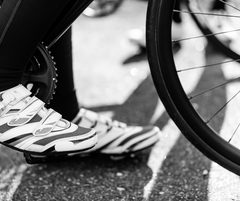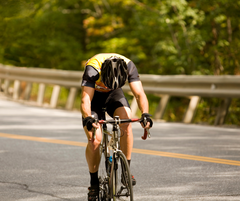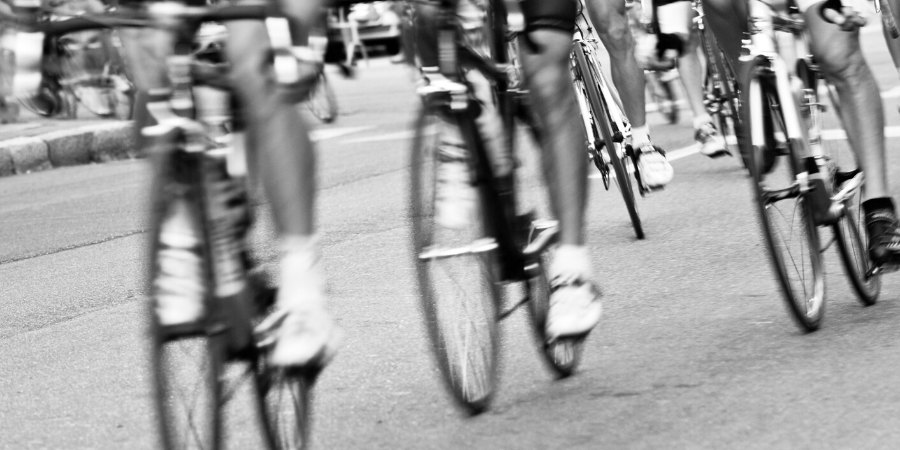The Tour de France is about to start, which means endless late nights glued to the TV. And, if you’re anything like us, the incredible athletes will inspire you to give long-distance cycling a spin.
But before you jump on a bike, there are a few things you can do to prepare and set yourself up for success. In honour of the 21 stages of the 2022 Tour de France, we’ve come up with 21 tips to help you get started – and most importantly, enjoy the ride.
Get the right gear
1. On your bike: You might already have a mountain bike or commute to work on a hybrid. But if you’re serious about doing long road rides regularly (say, more than two hours), we suggest you invest in a proper road bike.2. Make sure it’s properly fitted. If the seat or handlebars are not quite right, you won’t feel comfortable and you’re more prone to injury and knee pain. So, it pays dividends to have your bike fitted professionally. Here are some good pointers if you’re not in the market for a new bike.
3. Protect your bum: We’re not going to sugar coat this one. If you’re not used to riding, your bum will feel it after a few hours in the saddle. Before you start, buy some padded bike pants to make the ride more comfortable.
4. Consider cleats: Flat pedals are perfect for beginners. But they’re also inefficient because you’re only generating power with the downward pushing motion. If you’re a keen cyclist, you might want to consider cleats, or cycling shoes which clip into the pedals. These let you pull on the upstroke as efficiently as you pull down, so you’re generating more power from every pedal stroke.

Cleats help make riding more efficient, so are worth considering if you're doing long rides regularly.
Ride smarter
5. Build endurance gradually. Good things take time. So don’t think you can go from 0 to 100km in your first training session. Former professional cyclist Alex Stieda recommends adding half an hour to each weekend ride over a period of eight weeks.
6. Pedal smarter. There are two parts to this tip: first, pace yourself on each ride. Don’t use all your energy in the first half hour, and make sure you leave enough in the tank to finish strong. Secondly, choose the most efficient gear. If you have a steep climb ahead, give yourself room to adjust gears so you don’t run out of juice halfway up.
7. Move around on your bike. You don’t want to hobble off your bike, so include some gentle movements during your long ride. Bicycling.com has some great exercise tips – periodically change hand positions, shrug your shoulders, reach one hand between your shoulder blades to stretch your tricep, and drop your heel below the pedal for a calf stretch.
8. Incorporate cross training. If you’re serious about becoming a better cyclist, it’s important to work your whole body. We suggest taking the advice of seasoned long-distance cyclists, who suggest a mix of balance exercises, stretching and weight training. It doesn’t have to be fancy – weight training can simply mean working with your own body weight and doing push-ups.
9. Work that core. If your core isn’t strong enough, you’ll end up with lower back pain after a long ride. Having a strong core will not only make the ride more fun, but make you a more powerful rider.
10. Have a positive mindset. Just like your muscles, your mind needs to be trained to support you through the long rides. Alpecin Cycling has some helpful ideas – these include positive self-talk, breaking the ride into segments and focusing on what’s immediately ahead, and finding a ‘trigger’ word when times are tough.

Maintain a positive mindset by focussing on a trigger word, such as "strong" or "courage"
Recover faster
11. Include recovery rides. Schedule recovery rides in between the more gruelling workouts. Plan for an easy, flat ride once or twice a week, generally around 30-45 minutes. Don’t make the mistake of pushing yourself too hard – a recovery ride should feel slow!
12. Cool down. Ever noticed Tour de France riders, Olympic swimmers and Grand Slam tennis champions hopping on a stationary bike after their event? If you think a cool down is only necessary for elite athletes, think again. After your ride, it’s best to do 4-5 minutes of easy pedalling. This helps you mentally wind down, gets your blood circulating more effectively, removes waste products from your muscles, and stops your muscles seizing up.
13. Use a foam roller. If you have tight muscles after a long ride, it’s time to make friends with your foam roller. The more consistent you are with foam rolling, the easier your recovery and better your flexibility. Bike Radar has five exercises to stretch out your glutes, ITB, thighs, shins and lower back.
14. Ice ice baby. Knee pain is a common complaint for long-distance cyclists. If you’re sure your bike is fitted correctly and you’re not overdoing the training, use an RE3 ice compression pack after each ride. This will help ease pain and speed up your recovery.
Fuel your body
15. Start hydrated. It’s important to replace the fluids you lose via sweat when you’re on your bike for hours. Sports Dieticians Australia recommends being well hydrated when you start each training session, and sipping on fluids regularly during the ride. If it’s a particularly hot day or long ride, a sports drink will help replace carbohydrate and electrolytes.

Keep your body hydrated and consider sports drinks for long rides
16. Fuel on the go. Bicycling Australia advises that your nutrition needs are based on body weight and duration – not the distance you cover. A good rule of thumb is to consume 30-60g of carbohydrate per hour during a ride if you’re on the bike for more than 1-2 hours. You can fuel your body with light, easily digestible snacks, such as bananas, energy bars, gels and sports chews.
17. Don’t wait until you’re thirsty. It’s easier than you think to overload on carbs, according to bicycling.com. They suggest how much you should eat and drink to fuel short rides (less than an hour), medium-length rides (1-3 hours) and long rides (3+ hours – make sure you scroll right to the end of the article). In short, don’t wait until you’re hungry or thirsty, but take small nibbles and sips from the start of your ride.
18. Before and after a ride. There are all sorts of theories about carb loading before a big event, but Bicycling Australia suggests keeping it simple. Just incorporate enough carbs in your daily diet. Of course, this amount is dependent to how much activity you do, so check out their daily carbohydrate goals to see what’s right for you.
19. On race day. So, you’ve ridden a lot and want to challenge yourself to an event? Great stuff! In short, don’t do anything different on race day from what you’ve tried in training. We’ve heard too many stories of cyclists deciding to have “just one more gel” to get through a race, and experiencing digestive issues as a result. Experiment with food and fluid in your practice sessions, not on race day.
Be prepared
20. Plan for the worst. While we don’t want things to go wrong, it’s best to be prepared for the worst. At a minimum, take a first aid kit, mobile phone, multitool, and gear to fix two flat tyres. You could also consider taking sunscreen, tinted glasses and some cash.
21. Know how to fix basic repairs. Local councils often have free bike repair courses. Before you start riding regularly, make sure you know how to fix a flat tyre, change a tube and repair a puncture. Also take heart from the fact that the riding community is incredibly supportive – if you ever spot someone in need, stop to help and know that you’ll be treated with the same kindness should you ever need it.
Importantly, there are loads of fantastic cycling groups you can ride with, who’ll boost your motivation and give you support and encouragement along the way. You could even sign up for a charity ride and raise money while improving your fitness. Cycle Down Under has a great list of upcoming events.
